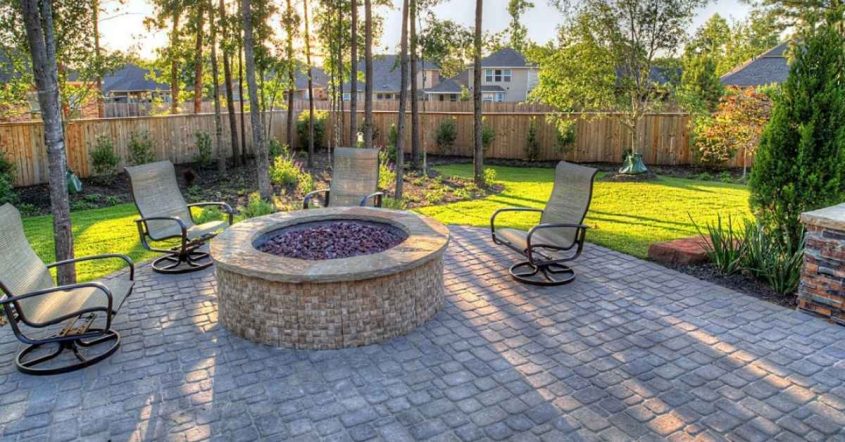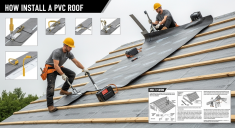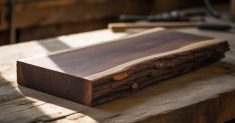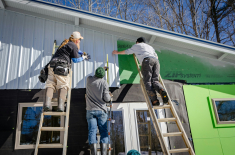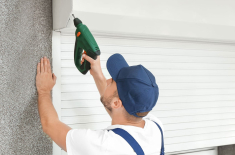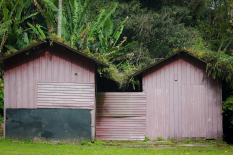Your patio is more than just an outdoor area—a space for relaxation, gatherings, and enjoying nature. The right flooring can completely transform its appearance, making it more inviting and functional. Choosing the best patio floor is essential because it affects durability, maintenance, and overall style. A strong and weather-resistant material ensures long-lasting use, while an aesthetically pleasing design enhances the beauty of your home. Some flooring options require minimal upkeep, while others need regular sealing and cleaning. Budget is also a key factor, as costs vary depending on material and installation. Considering durability, aesthetics, maintenance, and budget, you can select the perfect patio flooring that looks great and stands the test of time.
Key Factors to Consider Before Choosing a Patio Floor
Selecting the correct patio flooring is about more than just style. It needs to be durable, safe, and suitable for your climate. Here are some essential factors to consider before making a decision:
Weather Resistance and Climate Suitability
Your patio floor should be able to handle different weather conditions. Materials like concrete, stone, or tiles are better in areas with heavy rain or snow because they resist water damage. For hot climates, choose heat-resistant options like light-colored tiles or composite decking to prevent the surface from becoming too hot.
Safety: Slip-resistant and Heat-Absorbing Materials
If your patio is near a pool or frequently gets wet, slip-resistant materials like textured tiles, rough stone, or treated wood are safer choices. In sunny areas, avoid dark-colored surfaces that absorb too much heat, making the floor uncomfortable to walk on.
Budget-Friendly vs. High-End Flooring Options
Patio flooring is available at a range of prices. Gravel and concrete are budget-friendly, while natural stone and premium wood are more expensive. While high-end materials offer better durability and aesthetics, some affordable options provide long-lasting value with proper maintenance.
Top 7 Patio Floor Ideas

Choosing the right patio flooring enhances your outdoor space’s beauty, durability, and functionality. Each option offers unique benefits from classic stone and brick to modern stamped concrete and artificial grass. Here are the top 7 patio floor ideas to help you create a stylish and long-lasting outdoor area.
1. Natural Stone Flooring
Natural stone flooring is a classic and elegant choice for patios. It adds a timeless beauty to outdoor spaces and blends well with different home styles. This flooring is highly durable and can withstand harsh weather conditions, making it a long-lasting option.
Best Stone Options:
- Slate – A strong and slip-resistant stone available in various colors.
- Limestone – Offers a smooth and natural look but requires sealing to prevent stains.
- Travertine – A stylish and cool-to-the-touch option, ideal for warm climates.
Weather Resistance and Maintenance Tips:
Natural stone is weather-resistant but requires some upkeep. Sealing the surface helps protect it from moisture, stains, and cracks. Regular sweeping and occasional washing keep it looking fresh. While stone is durable, it can be expensive compared to other materials. However, its long lifespan makes it a worthwhile investment.
2. Wooden Decking
Wooden decking is a popular choice for patios because of its warm and natural look. It creates a cozy outdoor space and blends well with gardens and backyards. However, properly choosing the right type of wood and maintaining it is essential for durability.
Hardwood vs. Composite Wood:
- Hardwood – Natural woods like teak, cedar, and redwood are strong and long-lasting. They have a rich, natural appearance but need regular sealing and staining to prevent rot and insect damage.
- Composite Wood – Made from wood fibers and plastic, composite decking is more resistant to moisture, insects, and fading. It requires less maintenance than natural wood and lasts longer.
Waterproofing and Maintenance Essentials:
Wooden decking needs protection from moisture to prevent warping and decay. Applying a waterproof sealant helps keep water out and extends the life of the wood. Regular cleaning, sealing, and checking for signs of damage will keep your wooden patio in excellent condition for years.
3. Stamped Concrete Flooring
Stamped concrete is a budget-friendly and versatile patio flooring option. It is made by pouring concrete and stamping it with patterns to create the look of stone, brick, or even wood. This allows homeowners to achieve a high-end look at a lower cost.
Customizable Designs:
Stamped concrete comes in many patterns and colors, making it easy to match different outdoor styles. It can mimic the appearance of natural stone, brick, or wood while being more affordable and easier to install.
Pros and Cons of Stamped Concrete:
Pros:
- Cost-effective compared to real stone or brick
- Highly customizable with various designs and colors
- Durable and long-lasting when properly maintained
Cons:
- Can develop cracks over time, especially in extreme weather
- Requires sealing to protect against moisture and stains
- Can be slippery when wet, so adding a textured finish is recommended
Regular maintenance, including sealing and occasional cleaning, helps extend its lifespan and keep it looking great.
4. Brick Patio Flooring
Brick flooring is a classic choice that gives patios a rustic and timeless look. It adds charm to outdoor spaces and works well with both traditional and modern homes. Bricks are known for their strength and durability, making them a long-lasting flooring option.
Popular Brick Patterns:
- Herringbone – A zigzag pattern that adds a decorative touch and provides strong interlocking support.
- Basketweave – A pattern where bricks are placed in pairs, creating a unique and textured look.
Long-Term Maintenance and Durability:
Brick patios are highly durable and can last for decades if properly maintained. However, they require regular care to prevent moss, weeds, and dirt buildup between the bricks. Cleaning with a brush and water, sealing the surface, and replacing any loose or broken bricks will help maintain their strength and appearance over time. While brick flooring may cost more than some other options, its durability and timeless appeal make it a great investment.
5. Outdoor Tile Flooring
Outdoor tile flooring is a stylish and practical choice for patios. It offers a clean and modern look while being easy to maintain. Tiles come in various materials, colors, and textures, allowing you to customize your patio to match your style.
Best Tile Types:
- Porcelain Tiles – Highly durable, water-resistant, and available in many designs. They can mimic wood, stone, or concrete.
- Ceramic Tiles – More affordable than porcelain but slightly less durable. Best for covered patios or mild climates.
- Interlocking Tiles – Easy to install without adhesives, making them a great option for DIY projects. Often made of plastic, wood, or rubber.
Slip-Resistant and Weatherproof Options:
For safety, choose textured or matte-finish tiles to prevent slipping, especially in wet areas. Frost-resistant tiles are ideal for colder climates, while UV-resistant ones prevent fading in sunny regions.
Easy Cleaning and Maintenance:
Outdoor tiles require minimal upkeep. Regular sweeping and occasional mopping keep them clean. Sealing the grout lines helps prevent dirt buildup and water damage, ensuring a long-lasting and attractive patio floor.
6. Gravel Flooring
Gravel flooring is an affordable and easy-to-install option for patios. It provides a natural, casual look and works well in gardens and outdoor seating areas. Since it does not require cement or adhesives, gravel is a great choice for DIY patio projects.
Benefits of Gravel Flooring:
- Natural Drainage – Gravel allows rainwater to pass through, preventing puddles and reducing the risk of water damage.
- Low Maintenance – Unlike other materials, gravel does not crack or fade. It requires minimal upkeep, with only occasional raking to keep it even.
- Eco-Friendly – Since gravel does not require cement or chemicals, it is an environmentally friendly choice.
Best Gravel Types for Patios:
- Pea Gravel – Small, smooth stones that create a comfortable and decorative surface.
- Crushed Stone – More stable than pea gravel, making it a good choice for furniture placement.
- Decomposed Granite – A finer, compacted gravel that gives patios a solid, natural look.
The gravel flooring is a budget-friendly way to create a functional and attractive outdoor space with minimal effort. Adding a border or stepping stones can help keep the gravel in place and enhance the overall design.
7. Artificial Grass Flooring
Artificial grass flooring is a great option for those who want a green and natural-looking patio without the hassle of real grass. It provides a soft surface, making it comfortable for walking, kids’ play areas, and pets.
Benefits of Artificial Grass:
- Soft and Comfortable – Feels like real grass but is more durable and easier to maintain.
- Eco-Friendly – Reduces water usage since it does not need watering like natural grass.
- Pet-Friendly – Safe for pets, and easy to clean by simply rinsing with water.
Enhancing Greenery Without Maintenance:
Unlike real grass, artificial turf does not require mowing, fertilizing, or watering. It stays green all year, even in extreme weather, making it a hassle-free option for homeowners.
Installation and Upkeep Guide:
Artificial grass is installed over a compacted base, such as crushed stone or sand, to ensure proper drainage. Once installed, it requires minimal maintenance—just occasional brushing and rinsing to remove dirt and debris. With proper care, it can last for years, making it a cost-effective and visually appealing patio flooring solution.
Best Patio Flooring Options for Different Climates

Selecting the right patio flooring based on your local climate is crucial for durability and long-term maintenance. Weather conditions such as extreme heat, heavy rainfall, and freezing temperatures can impact flooring materials differently, so choosing the right one helps prevent damage and ensures safety.
Heat-resistant materials like natural stone, porcelain tiles, and composite decking work best in hot and sunny regions. Travertine and limestone stay cooler than concrete, while UV-resistant porcelain tiles do not fade under harsh sunlight. Composite decking is another excellent option as it resists heat buildup better than traditional wood.
For rain-prone areas, waterproof and quick-drying options are essential. Stamped concrete, when properly sealed, prevents water absorption and reduces slipperiness. Gravel flooring is a low-maintenance choice that allows natural drainage, preventing water accumulation. Textured porcelain or ceramic tiles also offer water resistance while providing a slip-proof surface.
Flooring should be freeze-resistant and slip-proof in cold climates to handle temperature fluctuations. Concrete pavers are a reliable choice as they expand and contract without cracking. Brick flooring is another durable option that withstands frost and moisture well. Composite wood decking resists moisture and prevents warping or splitting, making it a practical choice for snowy regions.
You can create a long-lasting, safe, and visually appealing outdoor space with minimal maintenance by choosing patio flooring that suits your climate.
Tips for Maintaining Your Patio Flooring

Proper maintenance helps keep your patio flooring in good condition for years. Regular cleaning, sealing, and seasonal care can prevent damage and maintain its appearance.
Regular Cleaning and Sealing for Long-Term Durability
Sweeping or rinsing your patio regularly removes dirt and debris that can cause stains or scratches. Applying a sealant protects against moisture, fading, and wear for surfaces like natural stone, concrete, and wood. Sealing should be done every one to three years, depending on the material and climate conditions.
How to Prevent Mold, Cracks, and Discoloration
Moisture buildup can lead to mold and mildew, especially in humid or rainy areas. To prevent this, ensure proper drainage and clean your patio with a mild soap or a vinegar-water solution. Cracks in concrete or stone should be repaired quickly to prevent further damage. Wood decking should be treated with weather-resistant coatings to avoid discoloration and warping.
Seasonal Care Tips for Different Flooring Types
During colder months, avoid using harsh de-icing salts on stone and concrete, as they can cause cracks. In hot weather, shading your patio with umbrellas or pergolas helps prevent the fading and overheating of materials like wood and tiles. Refilling gravel periodically ensures an even surface and proper drainage for gravel patios.
With regular upkeep, your patio flooring will remain durable, safe, and visually appealing for years.
Conclusion
Selecting the correct patio flooring depends on your style, climate, and budget. Whether you prefer the natural elegance of stone, the warmth of wood, or the practicality of concrete and tiles, choosing a material that suits your environment ensures durability and comfort.
Regular cleaning, sealing, and seasonal maintenance are essential to keeping your patio floor in great condition. Proper drainage, protection against extreme weather, and timely repairs help prevent damage, such as cracks, mold, and fading.
Investing in the right flooring and maintaining it well can create a beautiful and long-lasting outdoor space that enhances your home’s value and provides a comfortable place to relax and entertain.

